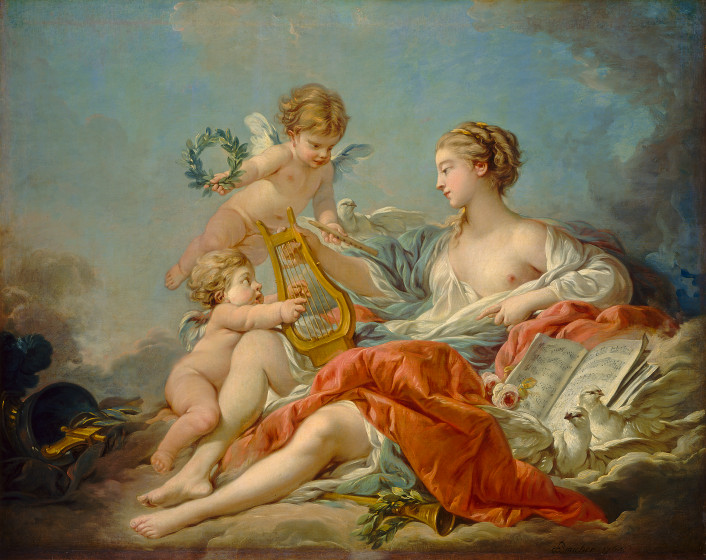Rococo

Rococo
The 18th century was a period of relative contemplation and peace. The dominant idea was that of the Enlightenment: human reason as the centre of all reality and the source of truth. Intellectual and emotional dualities were believed to reveal that freedom was an essential part of human life. As such, the art of the 18th century was full of references to contrasts between feelings and intellect, frivolity and morality, excess and sobriety. These contrasts may also be discerned in the art style known as Rococo. Rococo is characterised by its lightness of touch, delicate colours and asymmetry. The world was depicted as idealised, elegant and free from problems. The subjects were characterised by flowing draperies, entanglements, seductive smiles and winking eyes. The name comes from rocaille, which means shell in French, a very popular motif in Rococo decorations. Society in the 18th century was refined and valued intimacy, which was translated to art. With its love scenes and half-naked bodies, Rococo emphasised noble flirting and so was not particularly religious.
